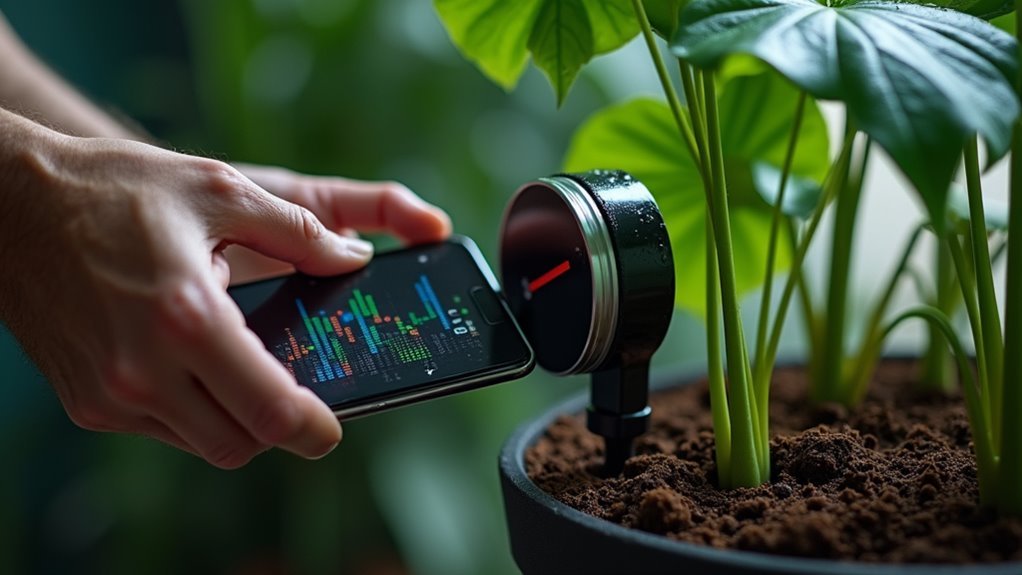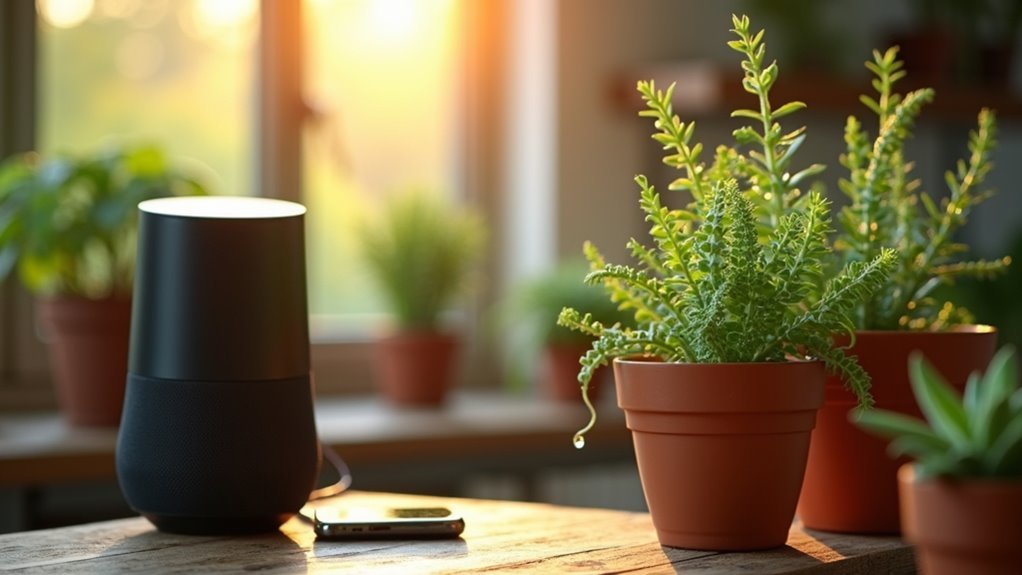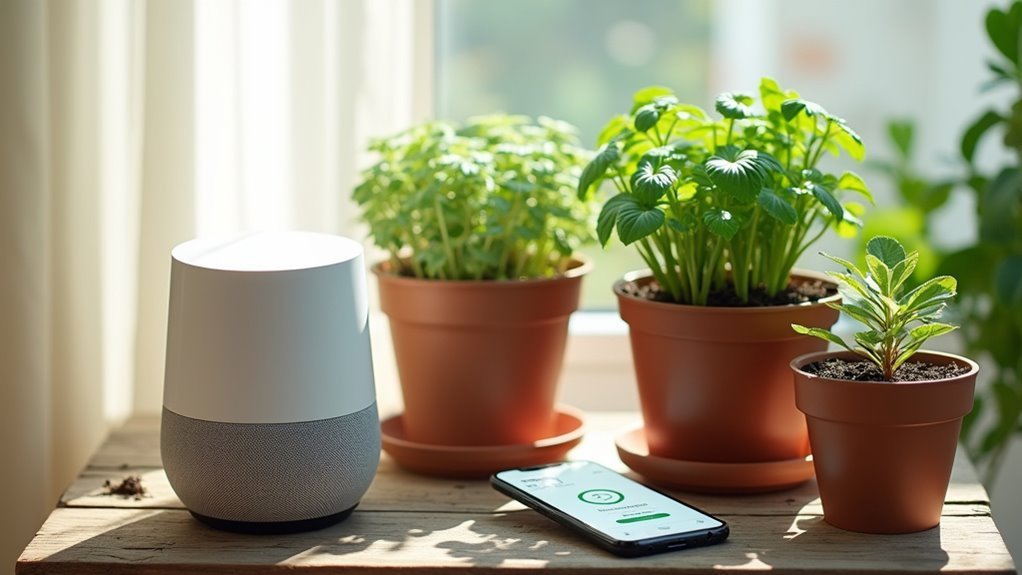You’ve probably struggled with keeping your plants properly watered, whether you’re dealing with inconsistent schedules or simply forgetting altogether. Voice-powered irrigation systems promise to solve these problems, but they’re not foolproof – many gardeners find themselves disappointed when their smart setups fail to deliver the results they expected. The difference between success and frustration often comes down to three critical implementation strategies that most people overlook.
Calibrate Your Voice Recognition System for Accurate Plant Care Commands

When you’re setting up a voice-powered irrigation system, you’ll need to start by customizing your voice recognition software’s vocabulary with plant-specific terminology. Include essential commands like “water,” “check moisture,” and “activate pump” to guarantee your Smart Irrigation system responds accurately.
Train the voice recognition software with different pronunciations and accents so various users can operate your drip system effectively. Create simple, clear command structures that won’t confuse the system when managing your irrigation system and moisture sensors.
Test performance under typical gardening conditions, including background noise levels where your plants growing areas are located. Include a pressure regulator in your setup for efficient irrigation control.
Integrate feedback mechanisms that let you correct misrecognized commands, helping your system learn and adapt for better long-term performance managing your automated watering needs.
Integrate Moisture Sensors With Voice Controls for Real-Time Watering Decisions
Since your voice-powered irrigation system can now accurately interpret commands, you’ll want to connect moisture sensors that provide real-time soil data directly to your voice controls.
Capacitive moisture sensors detect precise soil dryness levels and relay this information through voice commands for immediate watering decisions. You can program your voice controls to activate irrigation systems automatically when moisture readings drop below customized thresholds for different plants.
This integration delivers real-time updates on soil conditions, allowing you to make informed irrigation choices instantly.
Establish Voice-Activated Schedules Based on Plant Types and Seasonal Requirements

Although different plants have varying water requirements throughout the year, you can establish voice-activated schedules that automatically adjust irrigation frequency based on each plant type’s specific needs and seasonal changes. Voice-activated systems enable real-time adjustments by responding to weather forecasts and moisture sensors data, ensuring maximum water efficiency.
| Plant Type | Summer Schedule | Winter Schedule |
|---|---|---|
| Succulents | Every 3-4 days | Weekly |
| Vegetables | Daily | Every 2-3 days |
| Flowering Plants | Every 2 days | Every 4-5 days |
| Trees/Shrubs | Every 5-7 days | Bi-weekly |
Program your drip irrigation during cooler parts of the day—early morning or evening—to minimize evaporation. Seasonal adjustments become effortless when you combine voice commands with automated watering schedules, creating ideal growing conditions for healthier plants year-round.
Frequently Asked Questions
What Is the 30 30 Rule for Drip Irrigation?
You’ll apply water for thirty minutes, then pause for thirty minutes. This pattern lets water penetrate deeply into soil, prevents runoff, and promotes healthy root growth while optimizing water usage.
What Is the 200/200 Rule for Drip Irrigation?
You’ll set emitter flow rates to 200 gallons per acre per hour and limit system length to 200 feet from your water source. This guarantees uniform distribution, maintains pressure, and can reduce water use by 60%.
How Can I Improve My Drip Irrigation?
You can improve your drip irrigation by installing pressure regulators, using appropriate flow-rate emitters for your soil, cleaning filters regularly, adding multiple emitters per large plant, and inspecting lines monthly.
What Is the Best Time of Day to Run Drip Irrigation?
You should run your drip irrigation between 4 AM and 8 AM when temperatures are cooler. This timing reduces evaporation losses, improves water penetration, and prevents fungal diseases from evening moisture.





Leave a Reply